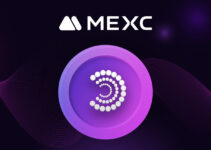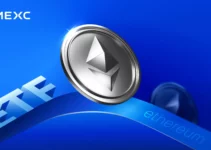
New Standard for DeFi Trading | Bridgeless Cross-Chain Protocol Hashflow (HFT) Market Analysis
1. Introduction to the Project
Hashflow (HFT) is a decentralized exchange that supports cross-chain interoperability. It can link users with professional market makers, and aims to provide zero slippage, low GAS fee and MEV-protected trading experience. Currently, Hashflow has supported public chains such as Ethereum, Avalanche, Polygon, Arbitrum, Optimism, and BNB.
The vast majority of decentralized exchanges such as Uniswap and Sushiswap mainly rely on automated market makers (AMMs) for asset trading. However, the AMM model has significant problems and faces many risks such as front-running, sandwich attacks, impermanent losses, high gas fee and frequent transaction failures. Hashflow adopts the request-for-quote (RFQ) model to allow professional market makers to manage liquidity pools, which is different from the AMMs that generate high slippage during transactions, a problem that Hashflow is trying to solve.
Request-For-Quote (RFQ) model
1. Off-chain Pricing Functions
When a user initiates a transaction request, Hashflow screens a number of professional market makers off-chain, inquires about the price and provides the user with the best offer. The market maker’s quote is confirmed by a cryptographic signature and cannot be modified twice. The price seen by the user is the price at which the transaction is successful.
2. On-chain Settlement
Users can place an order after checking the transaction information. Hashflow sends the transaction information to the blockchain, which is packaged and processed by the miners to complete the spot transaction.
Professional market makers can bridge CeFi prices with DeFi through Hashflow, and they can do this in a trustless and easy-to-use way. Since these market makers are not constrained by the simple pricing of the AMM curve, they are able to price on-chain as they would off-chain, and users can get the same price on DeFi as they see on MEXC.
The Working Principle of Hashflow Cross-Chain Swaps
Hashflow enables the native-to-native swap function where users no longer need to rely on cross-chain bridges that are prone to problems. Users can complete cross-chain asset swaps in minutes without the need for external bridges. Users are not required to escrow their assets to mint bridged assets on the destination chain.
How Does It Work?
- Trader requests a quote to sell 100 ETH on Ethereum (source chain) and buy 200 AVAX on the Avalanche (destination chain)
- Market maker provides a signed quote to the trader
- Trader submits the transaction on Ethereum with the signed quote as the payload
- The liquidity pool smart contract on Ethereum performs security checks, transfers funds from trader’s wallet into the pool, sends the payload, and calls the gateway smart contract on Ethereum
- Once the transaction on Ethereum is successful, the gateway smart contract triggers an event
- The validators then use the event to validate the transaction and submit the proof along with the payload to the gateway endpoint on the Avalanche
- The relayers then submit the payload to the destination chain and transfer AVAX to the trader’s wallet on the Avalanche
It should be noted that the above steps do not rely on external bridges or require users to escrow their assets on the source chain to mint a bridged asset on the destination chain.
According to the official website, the cumulative trading volume of Hashflow since its launch has exceeded $10.148 billion. Among them, the 7-day trading volume is $163.47 million, the 24-hour trading volume is $29.17 million, and the current TVL is $38.46 million.
2. Tokenomics
Hashflow’s governance token is HFT, with a total supply of 1,000,000,000, and the distribution is as follows:
19% to the Core Team: Founding team members and engineers who designed, developed and deployed the Hashflow protocol
25% to Early Investors: Those who helped launch the Hashflow protocol
31.25% to the Community Treasury
6.75% for Early Contributor Rewards
4% for Future Hires
14% for Market Makers
The rules concerning HFT release will be updated after the official announcement is made.
3. Investors
According to public information, Hashflow has raised funding of $3.2 million, and the investors include Dragonfly Capital, Electric Capital, Alameda Research, Metastable Capital, Galaxy Digital, etc.
4. Relevant Links
Hashflow has high popularity in the market and its social medias are active. As of November 1, its Twitter has 161.8K real-time followers, while its Discord has 121.2K users, and 9.5K real-time online numbers.
Twitter:https://twitter.com/hashflow?s=21
Linktree:https://linktr.ee/hashflow
Website:https://www.hashflow.com/
Discord:https://discord.com/invite/hashflow
Telegram:https://t.me/hashflownetwork
Docs:https://docs.hashflow.com/hashflow/
5. Analysis of the Token’s Utilities
The utilities of HFT are as follows:
1. Governance: Users holding HFTs can vote for governance in Hashflow
2. Staking: Users can stake HFTs in the public pools to obtain corresponding earnings
Advantages
- Zero Slippage
When the size of a single transaction is too large compared to the size of the exchange pool, slippage occurs, which has a great impact on the expected price and execution price. All Hashflow quotes are executed at the displayed price.
Hashflow’s public pools are continually monitored and rebalanced by market makers to prevent impermanent loss.
- Bridgeless Cross-Chain Swaps
Hashflow supports cross-chain swaps of any type of assets, such as spot, options, futures, etc.
- MEV-Resistance
Hashflow allows market makers to source liquidity from anywhere and price assets using off-chain pricing functions, backed by cryptographic signatures. This ensures that prices are guaranteed and no front-running or MEV attacks can occur.
Note: MEV is “Miner Extractable Value”. Taking Ethereum as an example, the operation of the Ethereum network relies on miners to package transactions to generate blocks. Miners can sort and intervene certain transactions when packaging transactions. Through these manipulations, miners may obtain extra profits in addition to transaction fees and block rewards. These extra values are called MEV.
Risk Analysis
Hashflow market makers can price assets off-chain, implying that they can submit favorable quotes to themselves for self-trading. If LPs invest in the public pool operated by the unprofitable or insolvent market maker, these LPs may not be able to withdraw assets. DEX has experienced rapid growth in the past two years and has grown into a key component of DeFi. There are endless new projects in the market trying to improve the AMM mechanism. The sector chosen by Hashflow has huge space and fierce competition. While it has certain first-mover advantages, it still needs to be verified by the market and users.
Note: This article is written by MEXC community users for information sharing only and does not constitute any investment advice.
Join MEXC and Start Trading Today!



